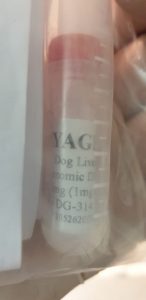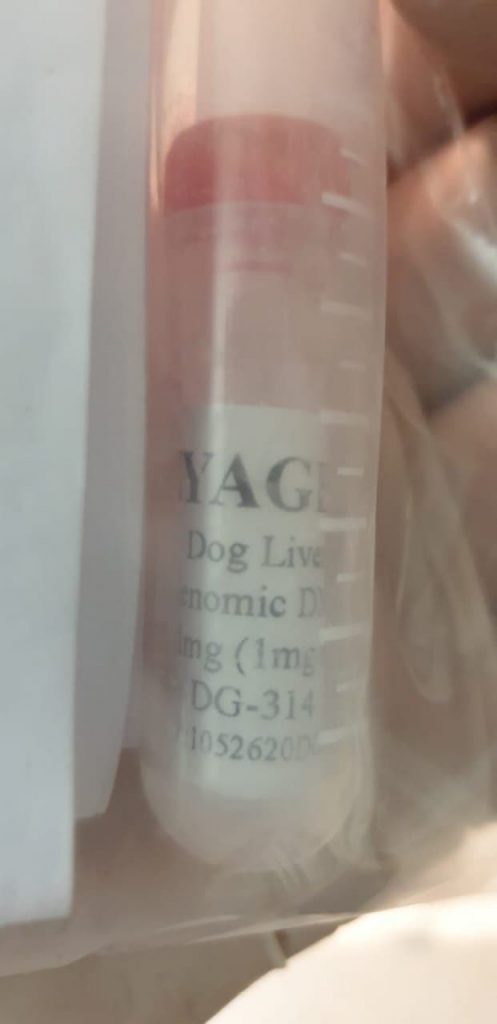Reductive evolution has endowed Mycobacterium tuberculosis (M. tb) with moonlighting in protein features. We exhibit that RipA (Rv1477), a peptidoglycan hydrolase, prompts the NFκB signaling pathway and elicits the manufacturing of pro-inflammatory cytokines, TNF-α, IL-6, and IL-12, via the activation of an innate immune-receptor, toll-like receptor (TLR)4. RipA additionally induces an enhanced expression of macrophage activation markers MHC-II, CD80, and CD86, suggestive of M1 polarization. RipA harbors LC3 (Microtubule-associated protein 1A/1B-light chain 3) motifs identified to be concerned in autophagy regulation and certainly alters the degrees of autophagy markers LC3BII and P62/SQSTM1 (Sequestosome-1), together with a rise within the ratio of P62/Beclin1, a hallmark of autophagy inhibition.
The use of pharmacological brokers, rapamycin and bafilomycin A1, reveals that RipA prompts PI3K-AKT-mTORC1 signaling cascade that in the end culminates within the inhibition of autophagy initiating kinase ULK1 (Unc-51 like autophagy activating kinase). This inhibition of autophagy interprets into environment friendly intracellular survival, inside macrophages, of recombinant Mycobacterium smegmatis expressing M. tb RipA. RipA, which additionally localizes into mitochondria, inhibits the manufacturing of oxidative phosphorylation enzymes to advertise a Warburg-like phenotype in macrophages that favors bacterial replication.
Collectively, our outcomes spotlight the position of an endopeptidase to create a permissive replication area of interest in host cells by inducing the repression of autophagy and apoptosis, together with metabolic reprogramming, and pointing to the position of RipA in illness pathogenesis. The findings demonstrated that pretreatment with breviscapine alleviated myocardial damage following CME by bettering cardiac dysfunction, lowering the serum ranges of markers of myocardial damage, decreasing the dimensions of myocardial microinfarct and reducing the cardiomyocyte apoptotic index.
More importantly, pretreatment with breviscapine resulted to a lower within the ranges of inflammatory and pro-apoptotic mRNAs and proteins in myocardial tissues and there was a rise within the ranges of anti-apoptotic mRNAs and proteins. However, these protecting results have been eradicated when breviscapine was mixed with LY294002. Furthermore, RipA additionally inhibited caspase-dependent programed cell loss of life in macrophages, thus hindering an environment friendly innate antibacterial response.
miR-145-5p attenuates inflammatory response and apoptosis in myocardial ischemia-reperfusion damage by inhibiting NOH-1
Myocardial ischemia-reperfusion (I/R) damage is a frequent complication following reperfusion remedy that entails a sequence of immune or apoptotic reactions. Studies have revealed the potential roles of miRNAs in I/R damage. Herein, we established a myocardial I/R mannequin in rats and a hypoxia/reoxygenation (H/R) mannequin in H9c2 cells and investigated the impact of miR-145-5p on myocardial I/R damage. After Three h or 24 h of reperfusion, LVESP, EF, and FS have been clearly decreased, and LVEDP was elevated. Meanwhile, I/R induced a rise in myocardial infarction space. Moreover, a lower in miR-145-5p and enhance in NOH-1 have been noticed following I/R damage.
With this in thoughts, we carried out a luciferase reporter assay and demonstrated that miR-145-5p instantly sure to NOH-1 3′ UTR. Furthermore, miR-145-5p mimics decreased the degrees of TNF-α, IL-1β, and IL-6 by way of OGD/R stimulation. Upregulation of miR-145-5p elevated cell viability and decreased apoptosis accompanied by downregulation of Bax, cleaved caspase-3, cleaved PARP and upregulation of Bcl2. In addition, miR-145-5p overexpression elevated SOD exercise and decreased ROS and MDA content material below OGD/R stress. Notably, NOH-1 might considerably abrogate the above results, suggesting that it’s concerned in miR-145-5p-regulated I/R damage.
In abstract, our findings indicated that miR-145-5p/NOH-1 has a protecting impact on myocardial I/R damage by inhibiting the inflammatory response and apoptosis. Coronary microembolization (CME) could cause myocardial irritation, apoptosis and progressive cardiac dysfunction. On the opposite hand, breviscapine exerts a important cardioprotective impact in lots of cardiac ailments though its position and the potential mechanisms in CME stay unclear. Therefore, the current examine aimed to determine whether or not pretreatment with breviscapine might enhance CME-induced myocardial damage by assuaging myocardial irritation and apoptosis. The attainable underlying mechanisms have been additionally explored.

Cryptotanshinone Attenuates Ischemia/Reperfusion-induced Apoptosis in Myocardium by Upregulating MAPK3
Chinese folks have used the basis of Salvia miltiorrhiza Bunge (known as “Danshen” in Chinese) for hundreds of years as an anticancer agent, anti-inflammatory agent, antioxidant, and heart problems drug. In addition, Danshen is taken into account to be a drug that may enhance ischemia/reperfusion (I/R)-induced myocardium damage in conventional Chinese drugs. However, Danshen is a combination that features varied bioactive substances. In this examine, we aimed to determine the protecting part and mechanism of Danshen on myocardium via community pharmacology and molecular simulation strategies.
First, cryptotanshinone (CTS) was recognized as a potential energetic compound from Danshen that was related to apoptosis by a community pharmacology method. Subsequently, organic experiments validated that CTS inhibited ischemia/reperfusion-induced cardiomyocyte apoptosis in vivo and in vitro. Molecular docking strategies have been used to display screen key goal data. Based on the simulative outcomes, MAPKs have been verified as well-connected molecules of CTS. Western blotting assays additionally demonstrated that CTS might improve MAPK expression.
Furthermore, we demonstrated that inhibition of the MAPK pathway reversed the CTS-mediated impact on cardiomyocyte apoptosis. Altogether, our work screened out CTS from Danshen and demonstrated that it protected cardiomyocytes from apoptosis. Triphenyl phosphate (TPP) is a incessantly used aryl organophosphate flame retardant. Epidemiological research have proven that TPP and its metabolite diphenyl phosphate (DPP) can accumulate within the placenta, and positively correlated with irregular start outcomes. TPP can disturb placental hormone secretion via the peroxisome proliferator-activated receptor γ (PPARγ) pathway. However, the extent and mechanism of placental toxicity mediation by TPP stays unknown.
[Linking template=”default” type=”products” search=”Annexin V-EGFP Apoptosis Kit 400 assays” header=”2″ limit=”152″ start=”4″ showCatalogNumber=”true” showSize=”true” showSupplier=”true” showPrice=”true” showDescription=”true” showAdditionalInformation=”true” showImage=”true” showSchemaMarkup=”true” imageWidth=”” imageHeight=””]
In this examine, we used JEG-Three cells to analyze the position of PPARγ-regulated lipid metabolism in TPP-mediated placental toxicity. The outcomes of lipidomic evaluation confirmed that TPP elevated the manufacturing of triglycerides (TG), fatty acids (FAs), and phosphatidic acid (PA), however decreased the degrees of phosphatidylethanol (PE), phosphatidylserine (PS), and sphingomyelin (SM).
